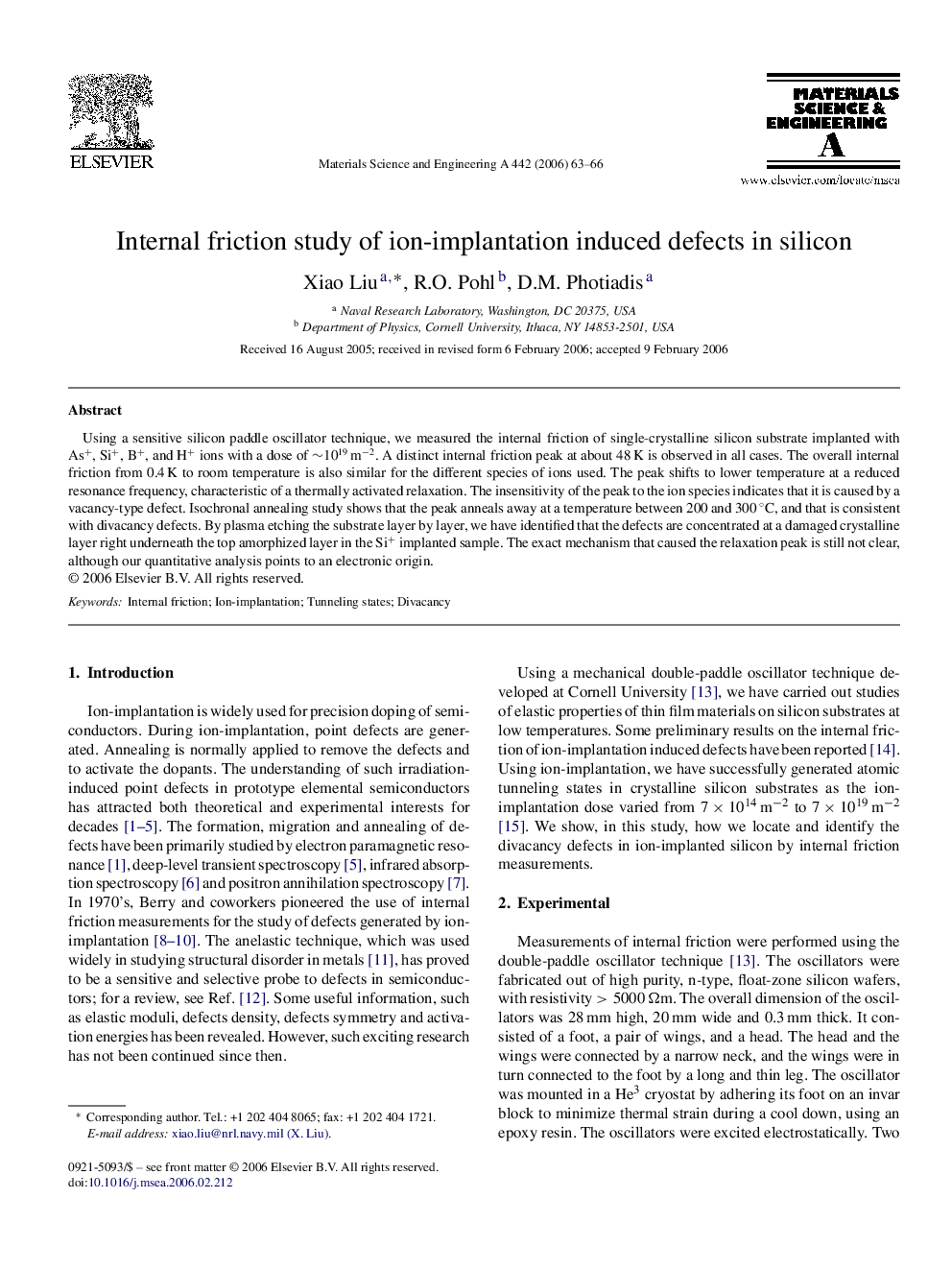| Article ID | Journal | Published Year | Pages | File Type |
|---|---|---|---|---|
| 1584612 | Materials Science and Engineering: A | 2006 | 4 Pages |
Abstract
Using a sensitive silicon paddle oscillator technique, we measured the internal friction of single-crystalline silicon substrate implanted with As+, Si+, B+, and H+ ions with a dose of â¼1019 âmâ2. A distinct internal friction peak at about 48âK is observed in all cases. The overall internal friction from 0.4âK to room temperature is also similar for the different species of ions used. The peak shifts to lower temperature at a reduced resonance frequency, characteristic of a thermally activated relaxation. The insensitivity of the peak to the ion species indicates that it is caused by a vacancy-type defect. Isochronal annealing study shows that the peak anneals away at a temperature between 200 and 300â° C, and that is consistent with divacancy defects. By plasma etching the substrate layer by layer, we have identified that the defects are concentrated at a damaged crystalline layer right underneath the top amorphized layer in the Si+ implanted sample. The exact mechanism that caused the relaxation peak is still not clear, although our quantitative analysis points to an electronic origin.
Related Topics
Physical Sciences and Engineering
Materials Science
Materials Science (General)
Authors
Xiao Liu, R.O. Pohl, D.M. Photiadis,
